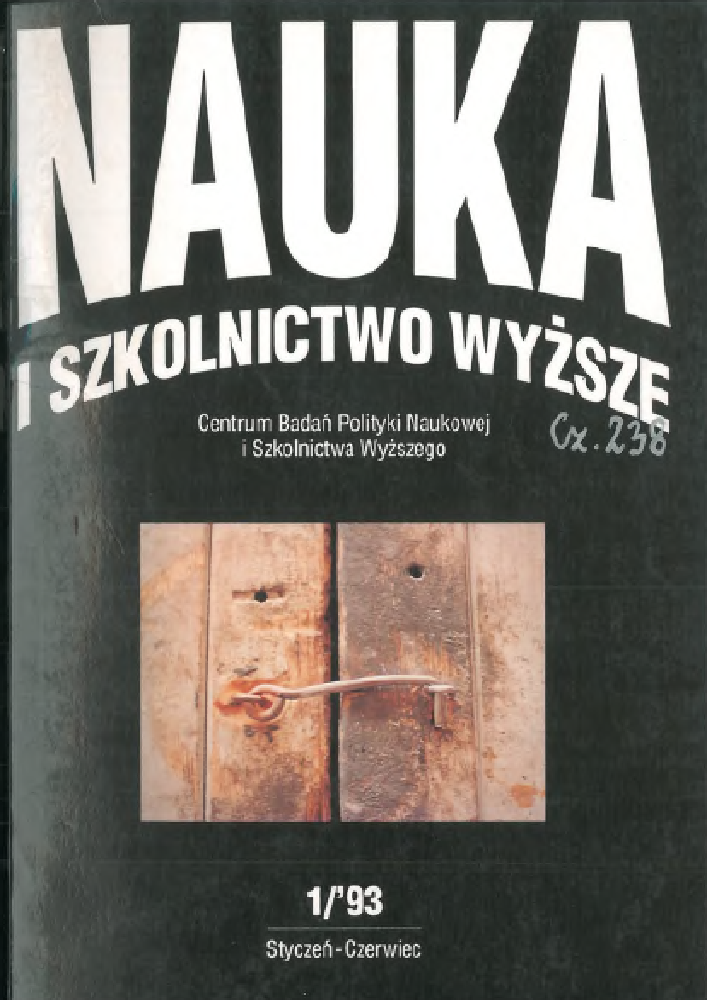Abstract
Several nations are currently considering ,privatization’ of parts of their higher education systems. This paper, mainly based on the American experience, examines,privatizing’ public institutions as an alternative to establishing solely ,private’ institutions. Institutions are analyzed along four dimensions: (i) ownership (public or private); (2) control (external or internal); (3) financing (public or private founds); and (4) mechanisms for public financing (who controls fund distribution and how). There are varying mixtures along these four dimensions both within countries and around the world, with the American system exhibiting the widest range of combinations. Six categories are described, including four common in the U.S.: „L Independent private”, where institutions are independent in ownership, in control, and in basic financing; „II. Dependent private”, independent in ownership and financing but dependent in control; „III. Independent public”, dependent in ownership but independent in control and substantially independent in financing; „IV. Semi-independent public (state/guild type)’,’, dependent in ownership, mixed in control, and heavily dependent in financing (less common in the U.S., but typical of Italy and Latin America); „V. Semi-independent public (state/trustee/guild type)”, where control is shared among state, academic guilds and lay boards of trustees but with mainly state-controlled financing; and „VI. Dependent public”, the model in the Communist nations. Kerr traces the historical path that led to the mixed American system and examines some of its positive consequences, which include institutional autonomy, diversity, and flexibility. Negative results include possible over-responsiveness to short-term pressures, as from the labor market or student preferences for courses of study, and from supporting bussiness or industry. The author concludes that the American experience with privatized’ public institutions may serve as a model for those elsewhere who now seek greater institutional differentiation, autonomy, and flexibility within national systems of higher education.
References
Baker K. 1989 Higher Education: The N ext 2j Years (wystąpienie na konferencji w Uniwersytecie Lancaster 5 stycznia, 1989). W: Speeches in Education. London: Department of Education and Science.
Berle A. A., Means G.C. 1952 The Modern Corporation and Private-Property. New York: Macmillan.
Brakeley J. P. J. 1987 Higher Education and American Philantropby. A Report for 1985;-1986. Stamford: Brakeley, John Price Jones, Inc. „Chronicie of Higher Education” 34/38.
Education Commission..., 1990 Report ofthe Task Force on State Policy and Independent Higher Education. Denver: Education Commission of the States.
Geiger R.L. 1988 Prwatięation of Higher Education: International Trends and Issues (raport z konferencji w Racine (Wisconsin), 15-18 czerwca 1987). New York: International Council for Educational Development.
Kerr C., Gade M. L. 1986 The Many Lines of Academic Presidents: Time, Place Character. Washington D.C.: Association of Goveming Boards of Universities Colleges.
Kerr C., Gade M. L. 1989 The Guardians: Boards of Trustees of American Coilleges and Unwersities. Washington D.C.: Association of Governing Boards of Universities Colleges.
Leibenstein H. 1980 Inflation, Income Distrihution, and X-Efficiency Theory. London: Croom Heim.
National Commision..., 1984 Presidents Make a Difference: Strengthening Leadership in Colleges and Universities. National Commission on Strengthening Presidential Leadership (Clark Kerr Chair). Washington D.C.: Association of Governing Boards of Universities Colleges.
Public and Prinate..., 1987 Public and Prwate Sectors in Asian Higher Education Systems. (Research Institute for Higher Education). Hiroshima: Hiroshima University.
Trow M. 1987 Defining the Issues in Unmrsity-Gmrnment. Relations: A n International Perspectwe. „Studies in Higher Education” 8, nr 2, s. 115-128.
Trow M. 1970 Reflections on the Transition from Mass to Unwersal Higher Education. „Daedalus” 99, nr 1, s. 1-42.
